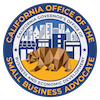Have you considered exporting internationally? With 95 percent of the world’s consumers located outside the United States, and a high demand for American products, international markets can be an area of immense opportunity for small businesses. Many entrepreneurs are intimidated by the thought of going global, but with proper market research and guidance beforehand, they needn’t be.
What is the first step in international market research?
“Before a company even starts the research process, they need to determine if they are ‘export ready,’ “ says SBDC Business Advisor Lynn Stewart. “Do they have the resources—time, money, personnel—to devote to exporting?” Stewart recommends the SBA’s Export Business Planner as a good tool to get you started assessing your export readiness. 
How can doing market research help an entrepreneur determine the best international markets for his or her products?
“It’s important to research how well your product fits a foreign market. Is there a demand? What is the price point? Who are your competitors? With taxes and tariffs, can your product be competitive?” says SBDC Research Coordinator Dr. Christopher Carter. “Macroeconomic indicators such as GDP growth, employment rates and birth rates will give you an overview of the state of the economy and population.” A bonus: Research may show you foreign countries where products that are less successful in the U.S. could be in high demand, adds Stewart.
How can an entrepreneur narrow down which countries to research?
Start by looking at where your competitors are going, Stewart advises. To which countries are they exporting? Then investigate country and industry reports to identify export trends and growing markets for your product and/or industry. Trade associations, U.S. government databases and reports from other global organizations are an excellent source for this type of information. Because they border the U.S. and benefit from NAFTA, Stewart says, Canada and Mexico are a good starting point for new exporters.
Once you have narrowed down your options, what are some of the key questions to ask about each market?
Start with a country assessment, which examines each country’s geographic, demographic, economic, cultural, political, legal and infrastructure, says Stewart. Then perform a market assessment, which examines the size, characteristics and projected growth of the target market; your competitors’ products, prices, marketing methods and distribution channels; any licenses or certifications needed to export to the country; tariffs and import regulations that will affect you; and how you will distribute your product or service (agent, distributor, licensee, etc.). Finally, says Carter, research whether you need to modify your products or packaging. “Certain colors or designs can have different meanings in different countries,” he explains, “and in some lower-income countries people want smaller package sizes, since they live on small daily earnings.”
What resources can help an entrepreneur research international markets?
Carter and Stewart cite a wealth of online resources, including the U.S. Department of Commerce and Department of State, the CIA World Factbook, the International Trade Administration, Global Edge (hosted by Michigan State University), industry associations and websites, and TradeStats Express. Offline, you can get help from the SBDC, SBA, SCORE, Centers for International Trade and Development (CITDs) and U.S. Export Assistance Centers (USEACs).
Is it necessary to actually visit the countries where you’re considering selling your products or to meet with potential retailers?
“Face-to-face meetings are always good, but we have many clients who have successfully exported using local distributors, without having visited the country,” says Carter. However, he highly recommends participating in trade shows, either in the target country or the general region. Stewart cautions that you should always vet any distributor or agent carefully. “Assess their operation, financial situation, market knowledge, marketing plan, other products they carry or represent, company background and technical ability.”
When you have gathered all your research, what factors should you consider in deciding which market or markets to target?
While there are many variables to consider, Stewart says the main factors are market potential (where will your product make money?), the competitive environment, ease of market entry and the presence of qualified partners. It’s recommended that small businesses select one or two markets first, then move on to others as they gain experience. “Selecting regions of focus such as Asia or Latin America rather than countries in different areas of the world is more cost effective, especially in terms of marketing, product modifications and travel,” Stewart says. “There is also the added benefit of regional trade agreements as well as using one country in the region as a gateway to others.”
Rieva Lesonsky is founder and President of GrowBiz Media, a media company that helps entrepreneurs start and grow their businesses. Before launching her business, she was Editorial Director of Entrepreneur Magazine. Follow Rieva at Twitter.com/Rieva and visit her blog, SmallBizDaily.com, to get the scoop on business trends and sign up for free TrendCast reports.





